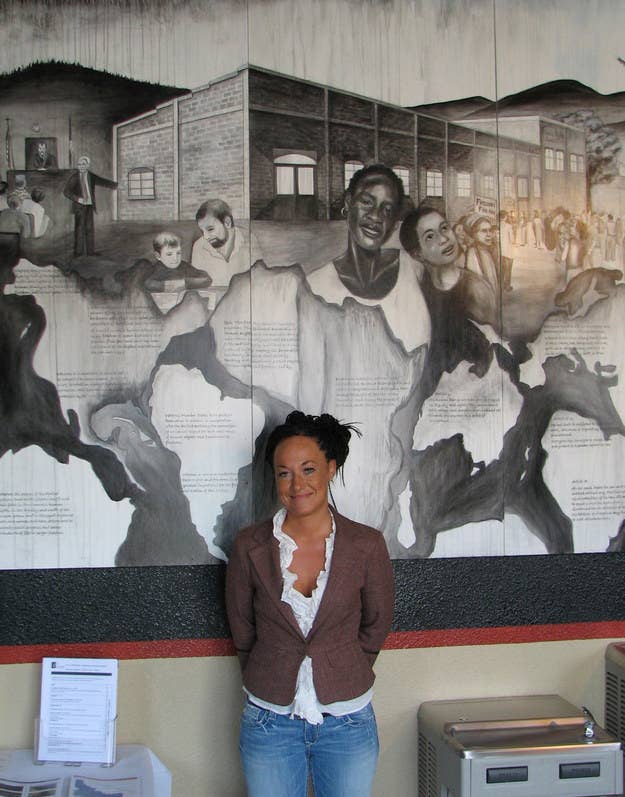
In 1895, when Justice Henry Billings Brown ruled that Louisiana's law segregating train cars was constitutional, he didn't want to get into the messy business of determining whether or not passenger Homer Plessy was actually black. Though only possessing "one eighth African blood," with "the mixture of colored blood" not "discernible in him," whether Plessy was black was a matter for the state to decide.
"[T]here is a difference of opinion in the different States, some holding that any visible admixture of black blood stamps the person as belonging to the colored race," wrote Brown, "others that it depends upon the preponderance of blood; and still others that the predominance of white blood must only be in the proportion of three-fourths."
Plessy v. Ferguson became the legal cornerstone of Jim Crow even though Homer Plessy was so light-skinned he could probably drive through Ferguson, Missouri, today without getting a ticket. In other words, who is black is a complicated question, one that remains fraught more than a hundred years after Brown's ruling blessing racial apartheid in a country founded on the premise of equality under the law. But the long tradition of African-American resistance is one that excels in turning efforts to subjugate black Americans into advantages. One of these is the reversal of the infamous "one-drop rule," which allows anyone who was a descendant of enslaved black Americans to identify as a member of the African-American community, which is why the NAACP's Walter White used his racial ambiguity to report on lynchings in the South while passing as white. To claim is to be claimed; to love is to be loved in return. It is that very tradition of love and acceptance that Rachel Dolezal, the NAACP leader in Spokane, Washington, who for years passed as a light-skinned black woman, took advantage of by manufacturing a biography that reads like a racial caricature of a dystopian young adult novel.
Dolezal knew it wasn't enough to perm and dye her hair and do whatever it is she did to her skin, and to tell everyone she was black. She also had to invent a history in which she and her family had borne the scars of racism, one in which she was born in a "tepee in Montana" and went hunting for food with bows and arrows. One in which she and her siblings endured beatings according to skin tone, and were lashed with "baboon whips" that were "pretty similar to what was used as whips during slavery," to say nothing of the years she spent filing questionable reports with police about hate crimes. With that connection, even someone as light as her could be black.
The irony is that racial barriers in America have always been permeable and ambiguous, even when they have been most violently enforced. A study based on information from the DNA testing company 23AndMe recently concluded that at least 3.5% of white Americans in the South have black ancestry, a legacy of black Americans light enough to pass for white seeking lives unencumbered by white supremacy. The New Deal was many things; it could also be seen as a racial transition program for millions of Italians, Jews, Irish, and other white ethnics who, for the first time, began attaining the full advantages of whiteness. So the answer to the question "Can you racially transition?" is: Yes, millions already have. We call them white people.
Despite that however, there are constants. No matter who becomes white, those defined as black remain at the bottom of America's racial caste system, even as a select few acquire wealth and power. If you look black, you are black in America, regardless of ethnic background or how you identify; defining himself as biracial did not prevent Tony Robinson from joining the long list of unarmed young black men gunned down by police. But crucially, even those people of African descent who, like Plessy, are racially ambiguous, retain black identity as people whose lives have been shaped by being the targets of white supremacy. Even if a stranger would not identify you as a black person walking down the street, those of us whose families fled racial apartheid, were redlined into ghettos, brutalized by police, and denied admission to colleges live lives unimaginable without America's long history of racism. A crucial part of blackness is inheritance of the sacrifices and struggles that were borne so you could be. To paraphrase Alton Scales, a light-skinned black character in Lorraine Hansberry's The Sign in Sidney Brustein's Window, as long as the world has a problem with black people, we will make a point out of being black.
Without her manufactured background, Dolezal would only have been able to be a white person devoted to black causes. The struggle for black rights has always had its white heroes, even if they are not its protagonists. White people have also been a part of the NAACP since its inception — but for reasons that we do not yet know, that was simply insufficient for Dolezal. Whatever it was she was trying to escape or prove, there's nothing about being white that would have disqualified her from being a civil rights advocate, any more than being white disqualified Eminem from rapping or Teena Marie from singing soul music.
There's nothing about Dolezal's story that supports the idea of race as a biological instead of a social barrier. What makes hers such a quintessentially American story is that it reaffirms both the fiction of race and racism's unending power over social interaction in American life. Had we come as far from 1895 as we'd like to believe, this story could never have existed at all.
